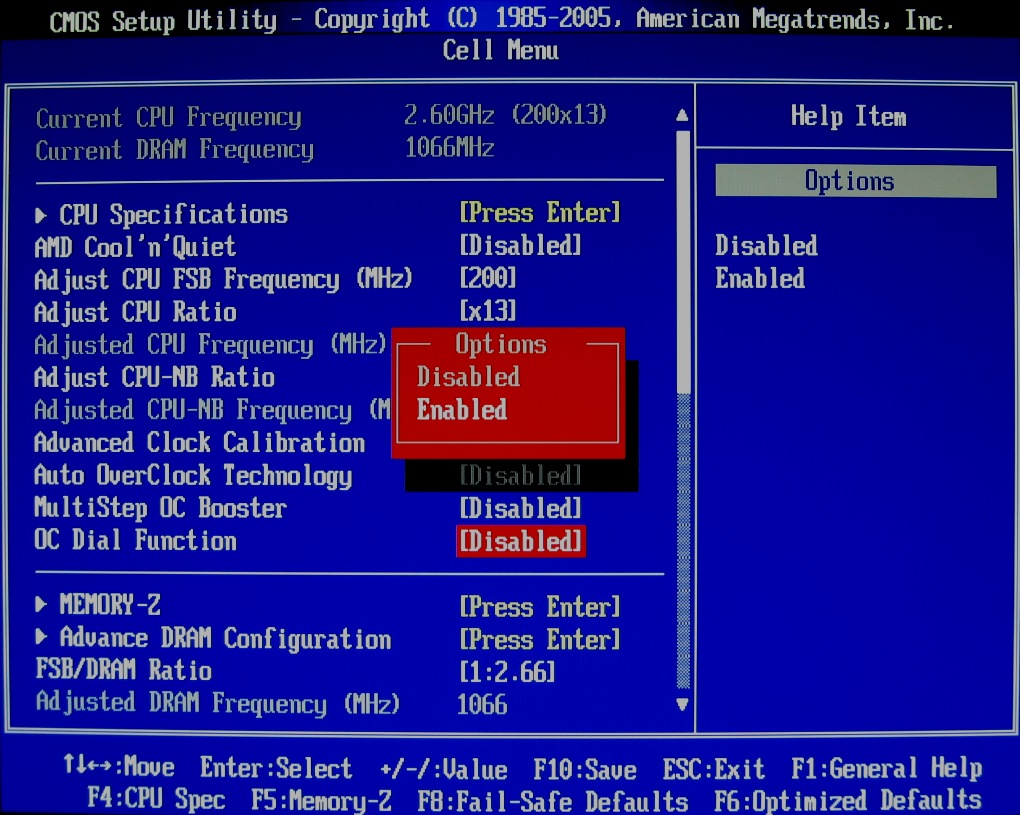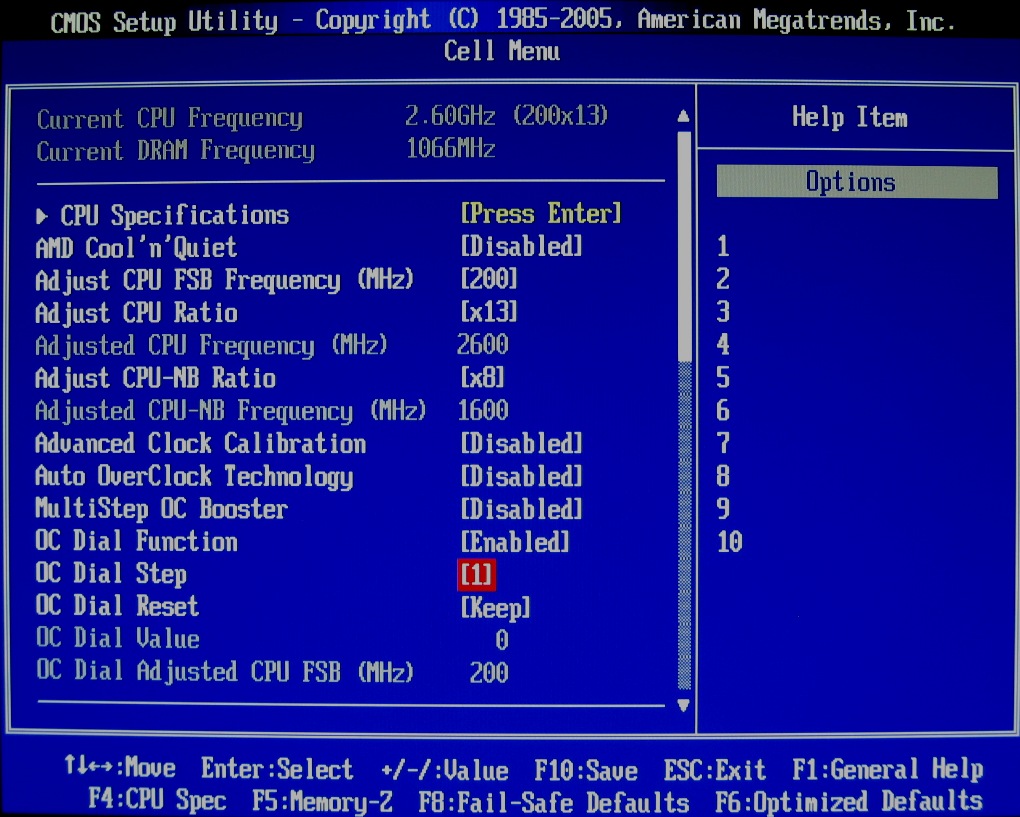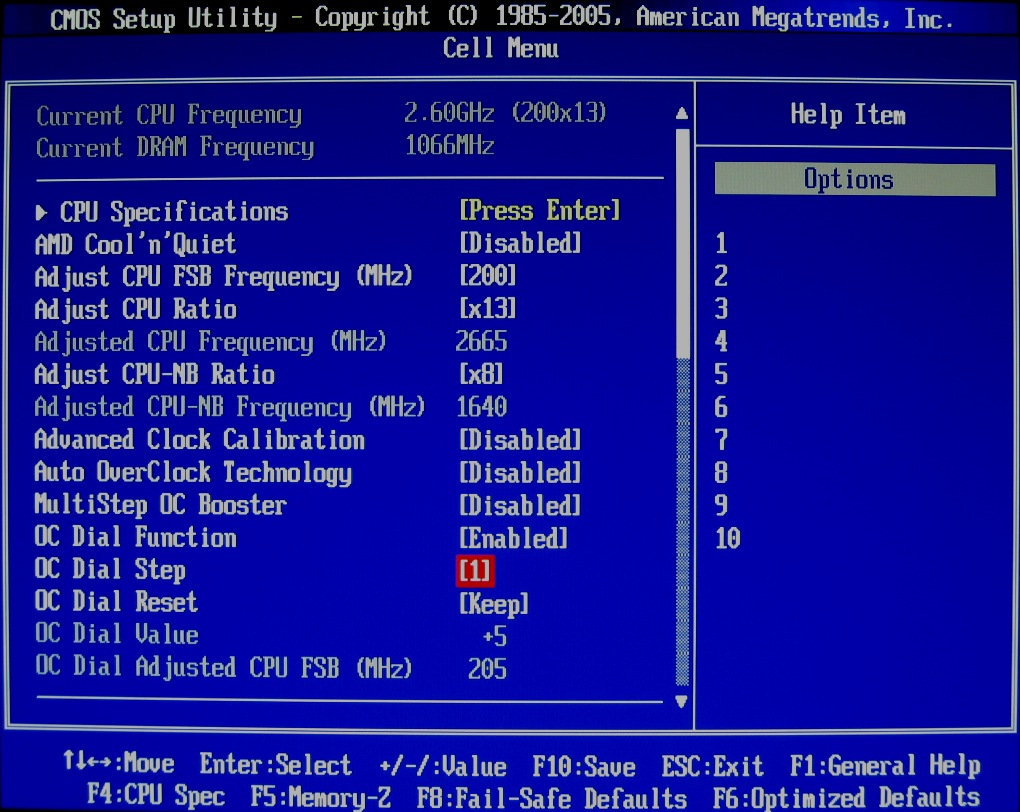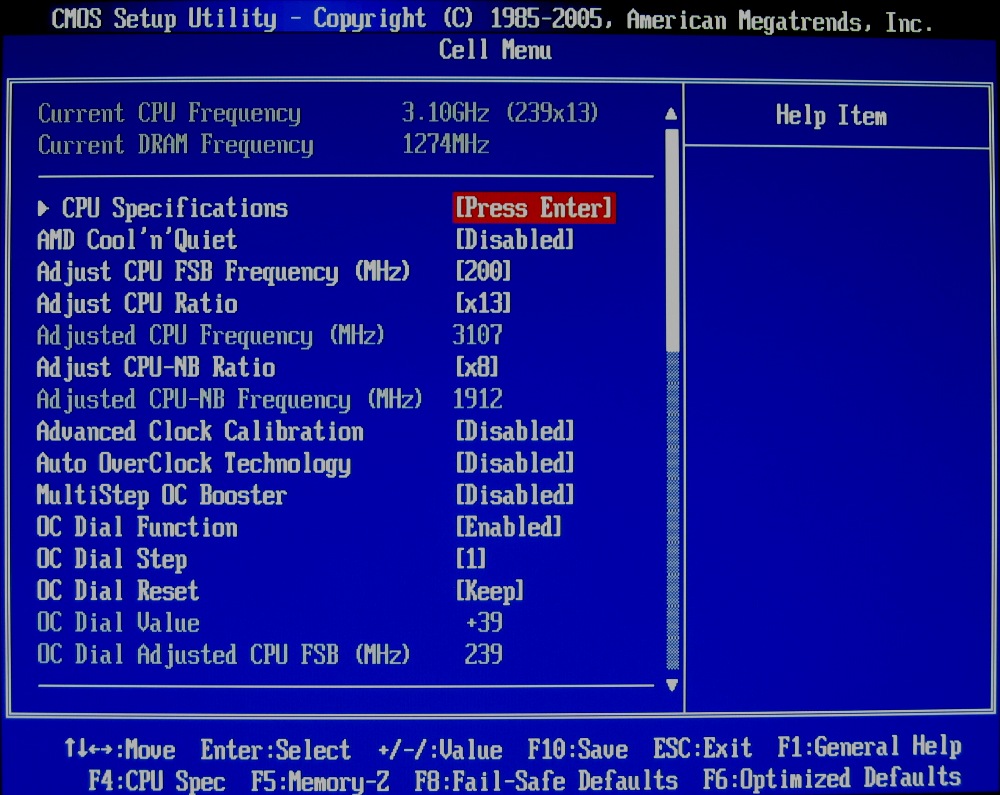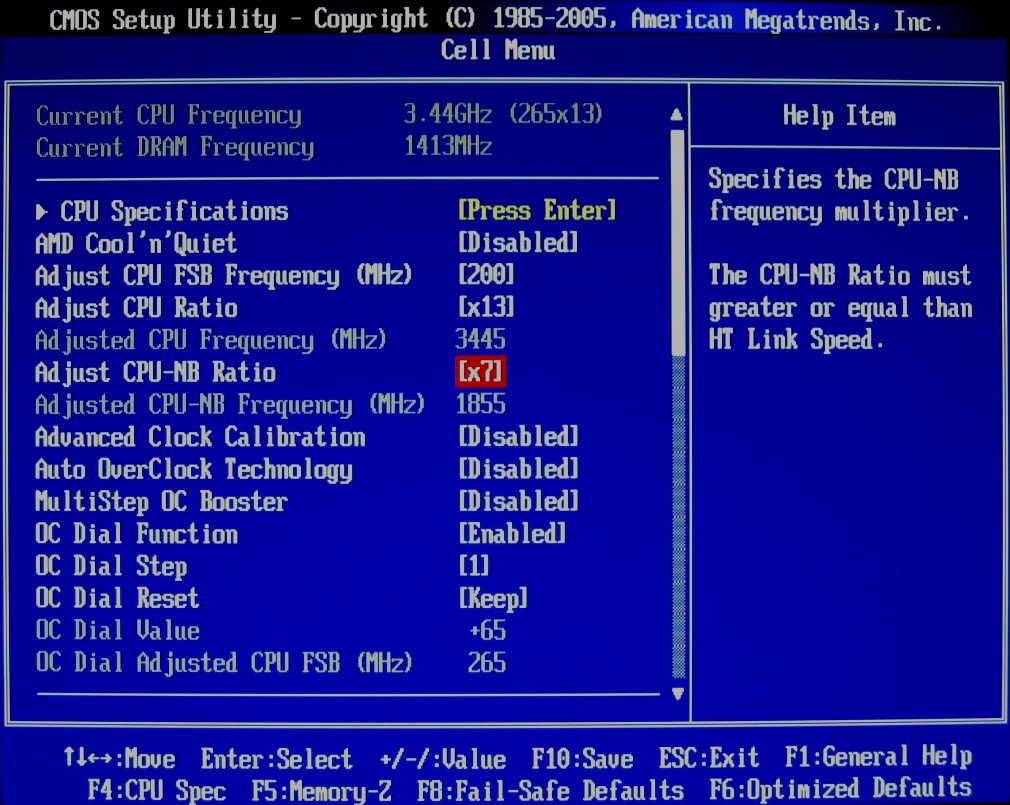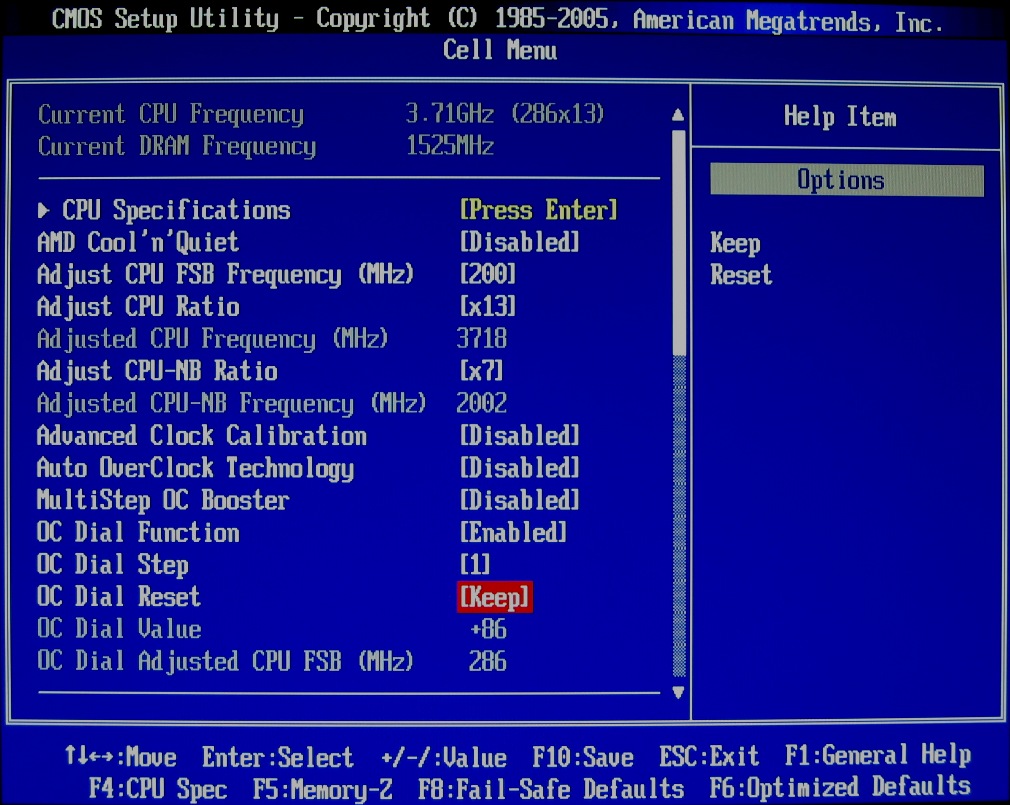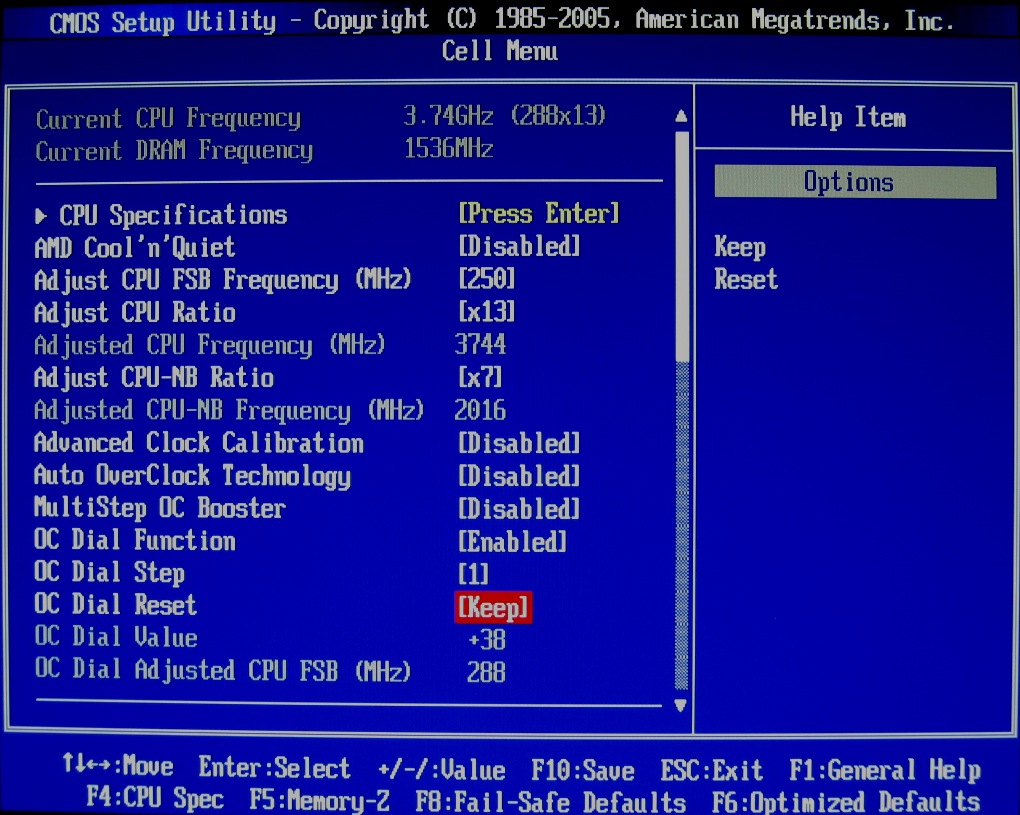Making Lemonade: Overclocking Your Locked AMD Processor
Overclocking Via OC Dial
OC Dial
Besides ample multiplier and voltage adjustments in the BIOS, other “tweak–friendly” features of the 790FX-GD70 are the buttons and OC Dial located at the bottom of the board. The power and reset buttons are handy for those who run the board outside of a case, and just about any enthusiast can appreciate the recessed Clr CMOS button, rather than a conventional jumper. MSI’s OC Dial consists of the OC Drive knob and OC Gear button. These allow real-time adjustment to the reference clock.
The OC Dial function is enabled in the BIOS’s Cell menu. OC Dial Step increments can be increased if desired, but we used the default 1 MHz increments. OC Dial Value shows the changes made by turning the OC Drive knob. The Dial Adjusted Base Clock is the adjusted reference clock, and equals FSB Clock + OC Dial Value.
Again, we prepared the BIOS to overclock by lowering the NB and HT multiplier, as well as the memory ratio. OC Drive can be instantly adjusted while in the BIOS, but in the operating system the OC Gear button acts as an on/off switch. After pressing OC Gear for a second, the on-screen LED lights up and the OC Drive knob will then function. The knob has sixteen positions, allowing a reference clock increase of 16 MHz in one full rotation. Once adjustments are complete, pressing OC Gear again shuts down the feature, which we recommend to protect system stability.
We then began turning the OC Drive knob and watching the reference clock and frequencies change in CPU-Z. The system automatically rebooted after one of the changes. Upon entering the BIOS, we discovered that the crash occurred at the same 239 MHz reference clock that gave us trouble in AMD OverDrive.
After this minor hiccup, the system had no trouble booting into Windows at a 239 (200 + 39) MHz reference clock. We continued to increase the OC Dial value all the way to 65 MHz, the point where more voltage would then be needed to continue.
Voltages were increased and multipliers lowered. Back in Windows, we ratcheted up OC Dial in 10 MHz increments. The system crashed beyond a 286 MHz reference clock, and the OS failed to load if OC Dial Value was above 86 MHz.
Get Tom's Hardware's best news and in-depth reviews, straight to your inbox.
After setting the CPU FSB frequency to 250 MHz, we rebooted back into the OS. This time the OC Dial could be increased all the way beyond our maximum fully stable overclock up to 288 MHz.
Current page: Overclocking Via OC Dial
Prev Page Overclocking Via AMD OverDrive Next Page More Performance, Additional Tweaking-
sohei it's about how to squeeze all performance from an locked cpu .Reply
this is a pro' article (head shot) -
brisingamen great article, should be more like it,Reply
and a few more gaming benches wouldnt hurt either guys!
speaking of headshots yes unreal tournament is probably the most important game to exemplify the value of overclocking and added framerates due to "headshots" and shtuff.
keep up the good work! -
Onus stray_gatorWhat's the point of using a high-end mobo to overclock a mainstream/value cpu?Fair question; no one would likely do this IRL, but I think the point here was to see how high the locked CPU could go, so they used a premium mobo.Reply
Paul, now that we know what this specific CPU can do, would it be useful to now put it on a more typical mainstream mobo and see what one might get from the same chip under more typical conditions?
The point would be to answer the following: if my budget just grew by $25, does it make more sense to buy a BE CPU or to get a more premium mobo? -
haplo602 stray_gatorWhat's the point of using a high-end mobo to overclock a mainstream/value cpu?Reply
because value mobos vary in stability much more than premium mobos. this article was just about the CPU limit, not the mobo limit. -
Tom's should do a shoot-out between an i7 920 and a 965BE that's had the multiplier taken down to 13x(2.6ghz), then both OCed to the max on the northbridge alone. I'm sure that would close the gap atleast somewhat, but I'm interested to see exactly how much. Maybe they could screw around with the HyperTransport multiplier as well, it might turn out that AMD has been shooting itself in the foot with the unlocked multiplier, when more performance would be had if they were forcing people to use the northbridge.Reply
-
Shadow703793 Good write up; but PLEASE do NOT recommend OCing via Windows. Most pro's here will tell you that same thing. BIOS > Windows for OCing.Reply


